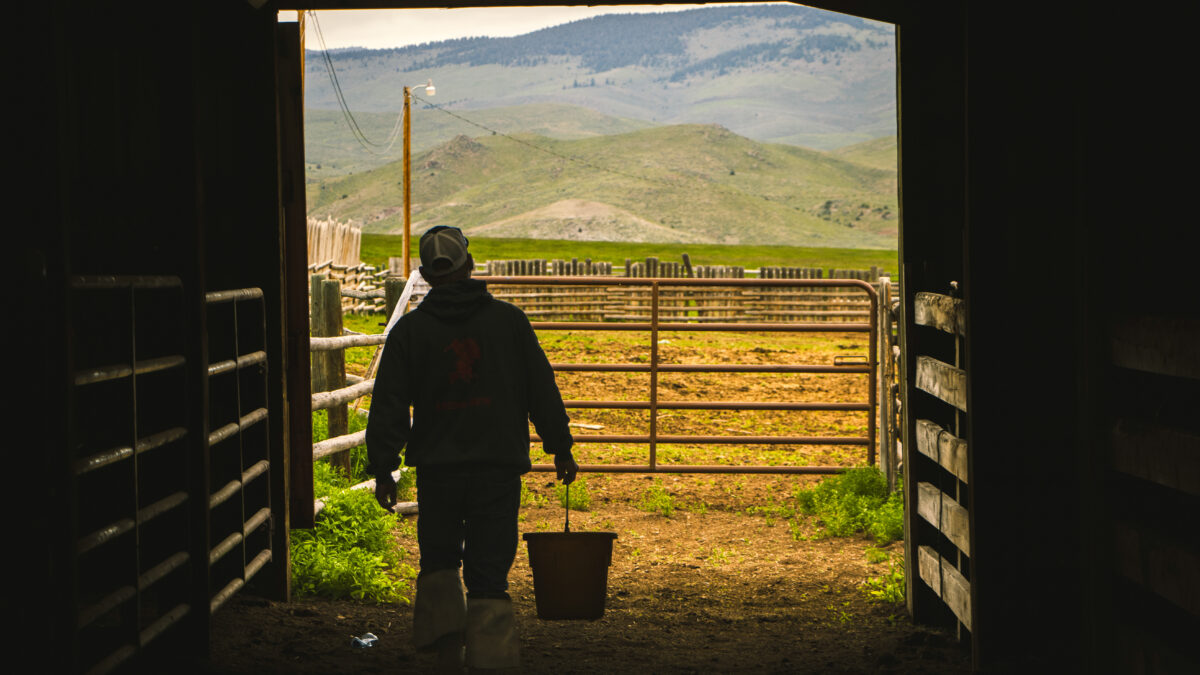Farmers at Low Risk of Being Replaced by Computers
Guest Author
Special Contributor to FB.org

photo credit: AFBF Photo, Dylan Davidson
Guest Author
Special Contributor to FB.org
By Stewart Truelsen
It’s a job-seekers’ market this year with the unemployment rate slowly declining and job creation at a high level, but how long will these jobs last? Computerization, robotics and artificial intelligence will bring a sea change to the workplace over the next couple of decades, creating new occupations and eliminating some current ones.
American agriculture knows something about a sea change. According to the Bureau of Labor Statistics, about 38 percent of the labor force worked on farms at the start of the 20th century. By the end of the century, the figure was less than 3 percent. A technological revolution on the farm greatly reduced the number of farmers needed, and many had to leave to find new opportunities in the cities.
Thank goodness for those farmers who could remain. They went through economic hardship at times, but powered American agriculture to the preeminent spot in the world. We will always need farmers, but the same can’t be said of all occupations.
In the 1950s, two of the most common jobs for men were milk man and gas station attendant. Today, home delivery of milk is a niche market, and with exceptions, we pump our own fuel, wash the windshield and check under the hood.
Recently, an Oxford University study found that 47 percent of American occupations are at risk of becoming automated in the next 20 years. Those at high risk include jobs in transportation, logistics, office and administrative support. Research found that the service industry, which has accounted for most of the recent job growth, also is highly susceptible to automation.
Least vulnerable are jobs in the health care field including, of course, physicians and surgeons. Teachers are safe and so are farmers, ranchers and other agricultural managers. They figured in the top 20 percent of the 702 occupations studied. Farmers rated ahead of airline pilots, commercial drivers, financial analysts, sales representatives, public relations specialists, historians and economists. At the very bottom of the list were telemarketers.
In his book, “The Industries of the Future,” innovation expert Alec Ross identified the trends that will shape the economy and work over the next decade. They include cybercrime, cybersecurity, the commercialization of genomics, the next step for big data and the coming impact of digital technology on money, payments and markets. He also believes that robotics will change home and workplace much the way the Internet did.
Agriculture is in a good position to deal with these trends and the future. Many farmers already are accustomed to big data, large amounts of data used to understand, analyze and forecast trends in real time. Data is necessary for efficient, high-yield farming known as precision agriculture.
Robots and drones also are being used in farming and ranching today, but the market is just scratching the surface. Almost every major tractor manufacturer has an autonomous tractor in the concept stage. One market source expects the driverless tractor market to take off by 2020, just a few years away.
Some might argue that this next sea change will take the farmer out of farming, but Ross doesn’t see it that way. He envisions farmers spending more of their day focused on tasks like data integration and keeping software up to date and less time with their hands in the soil. Thanks to cloud computing, smartphones and tablets, high-tech farming is not limited to large farms. Small farms can take advantage too.
The sea change of a century ago did in fact take many farmers out of farming; they had little choice. This time around it is more likely that we will need all the farmers we have, and more, to feed a growing world population. These farmers will rely less on instinct and experience and more on management ability and new technology.
Stewart Truelsen
Freelance writer
Stewart Truelsen is a food and agriculture freelance writer and a regular contributor to the Focus on Agriculture series.
Trending Topics
VIEW ALL